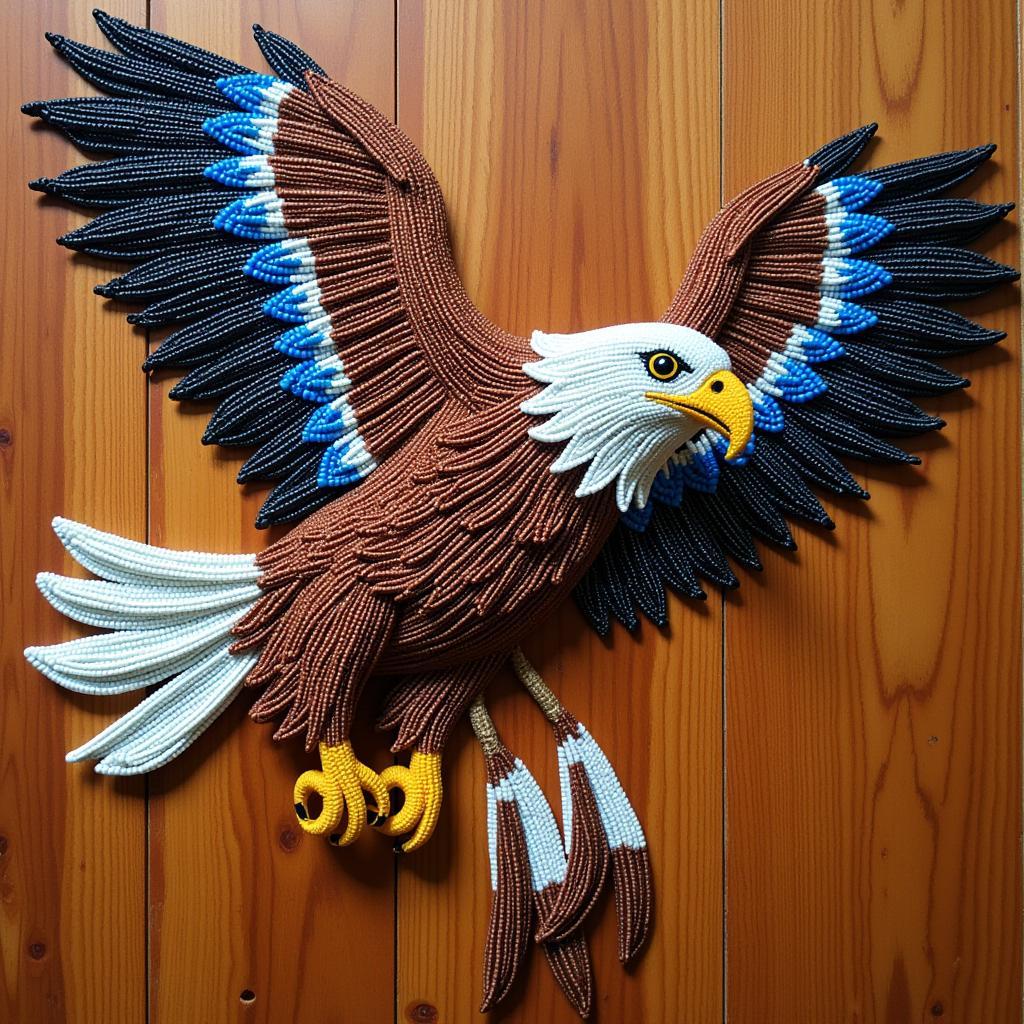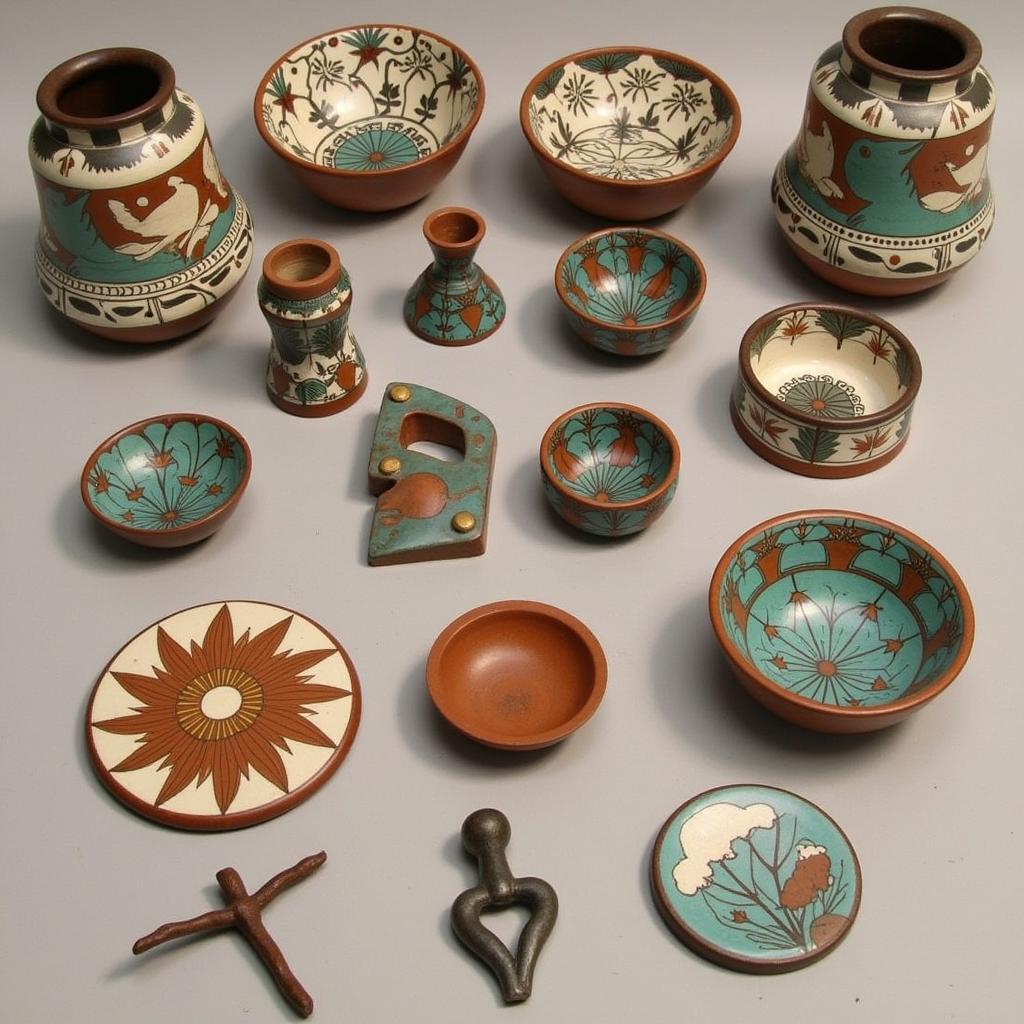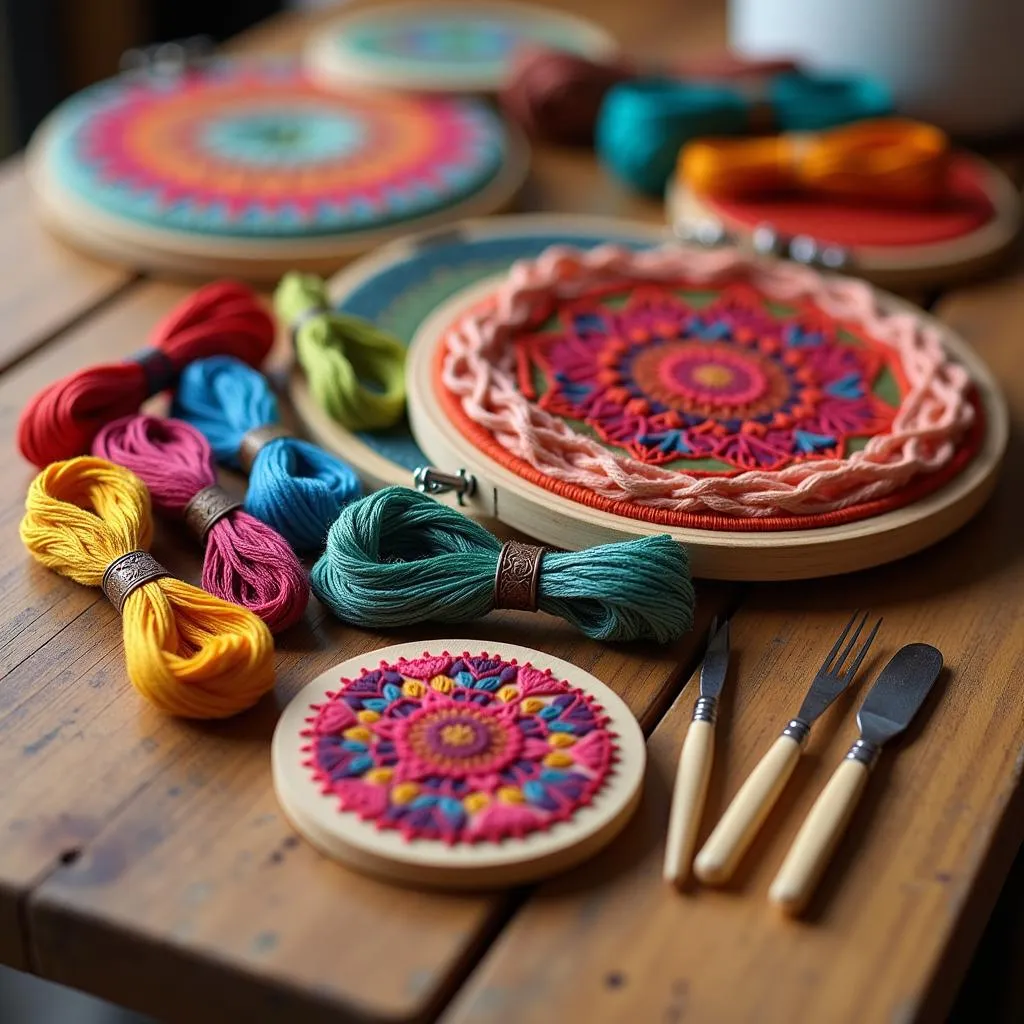Native American Symbols in Art: A Journey Through Culture and Meaning
Native American art is a rich tapestry woven with vibrant colors, intricate patterns, and powerful symbols. These symbols, passed down through generations, offer a glimpse into the beliefs, values, and stories of the diverse Indigenous cultures across North America. Understanding these symbols unlocks a deeper appreciation for the art itself and the people it represents.
The Significance of Symbols in Native American Culture
For Native Americans, symbols are more than just decorative elements; they are sacred representations of the natural world, spiritual beliefs, and cultural identity. Each tribe developed its own unique vocabulary of symbols, often influenced by their environment, history, and interactions with other tribes. These symbols are not static but rather fluid and adaptable, their meanings evolving over time and carrying different interpretations depending on the context.
Take, for instance, the symbol of the eagle. Across many tribes, the eagle, soaring high above the earth, embodies power, strength, and a connection to the divine. Its feathers are highly revered and used in ceremonies and regalia, signifying wisdom, honor, and spiritual elevation. However, the specific meaning attributed to the eagle can differ between tribes.
 The Eagle Symbol in Native American Art
The Eagle Symbol in Native American Art
Similarly, the symbol of the bear, often associated with strength, courage, and healing, might hold different connotations for different tribes. Understanding these nuances is crucial to appreciating the depth and complexity of Native American symbolism.
Common Native American Symbols and Their Meanings
While the specific meanings and interpretations of symbols can vary, some common themes and representations emerge across different Native American cultures.
Animals as Symbols
Animals play a central role in Native American symbolism, reflecting the deep respect and connection Indigenous people have with the natural world.
- Eagle: As mentioned earlier, the eagle often symbolizes power, strength, and a connection to the Great Spirit.
- Bear: Represents strength, courage, protection, and healing.
- Wolf: Symbolizes loyalty, intelligence, and strong family bonds.
- Buffalo: Represents abundance, prosperity, and a connection to the earth.
- Horse: Symbolizes freedom, mobility, and power.
Nature’s Elements in Symbolic Form
Beyond animals, natural elements like the sun, moon, stars, water, and wind also feature prominently in Native American art, representing the fundamental forces of life and the interconnectedness of all things.
- Sun: A powerful symbol of life, energy, and growth. It often represents the cycle of life, death, and rebirth.
- Moon: Symbolizes femininity, intuition, and the cyclical nature of time.
- Stars: Represent guidance, hope, and the ancestors watching over them.
- Water: Represents life, cleansing, and renewal.
- Wind: Symbolizes breath, spirit, and change.
 Native American Nature Symbols
Native American Nature Symbols
Geometric Patterns and Their Significance
In addition to representational imagery, Native American art often incorporates intricate geometric patterns. These patterns, far from being merely decorative, hold deep symbolic meanings and can represent abstract concepts, clan affiliations, or spiritual beliefs.
For example, the use of spirals might represent the journey of life, the interconnectedness of all things, or the movement of energy. Triangles might symbolize strength and stability, while squares could represent the four directions or the balance of the natural world.
Appreciating Native American Art Responsibly
As we delve into the fascinating world of Native American Symbols In Art, it’s crucial to approach it with respect and sensitivity. Cultural appropriation, the act of adopting elements of another culture without understanding or respecting their original meaning, is a serious concern.
Here are some guidelines for appreciating Native American art responsibly:
- Do your research: Learn about the specific tribes and their cultural contexts before interpreting their art.
- Support Native artists: Purchase authentic Native American art directly from artists or reputable dealers who ensure fair trade practices.
- Ask questions: If you’re unsure about the meaning of a symbol or the cultural significance of a piece, don’t hesitate to ask knowledgeable sources.
- Be mindful of stereotypes: Avoid perpetuating harmful stereotypes or misrepresenting Native American cultures.
Conclusion
Native American symbols in art offer a captivating window into the rich history, spiritual beliefs, and enduring connection to nature that defines these diverse cultures. By approaching this art form with respect, curiosity, and a willingness to learn, we can deepen our appreciation for the profound stories it tells and the enduring legacy it represents.
FAQs about Native American Symbols in Art
1. What are some of the most common Native American symbols?
Some of the most common Native American symbols include the eagle, bear, wolf, buffalo, sun, moon, stars, water, and various geometric patterns. However, their specific meanings can vary between tribes.
2. Are all Native American symbols the same across different tribes?
No, while some symbols might share common themes, each tribe has developed its unique vocabulary of symbols influenced by their environment, history, and beliefs.
3. Where can I learn more about the specific symbols used by a particular tribe?
You can find more information about specific tribal symbols by visiting museums, cultural centers, or reputable online resources dedicated to Native American art and culture.
4. What is the best way to support Native American artists?
The best way to support Native American artists is to purchase their work directly from them or reputable dealers who ensure fair trade practices. You can also attend art exhibitions, workshops, and cultural events organized by Native American communities.
5. Is it disrespectful to wear or display Native American symbols?
Wearing or displaying Native American symbols can be considered disrespectful if done without understanding or respecting their cultural significance. It’s essential to be mindful of cultural appropriation and to avoid using these symbols as mere fashion statements.
For any inquiries regarding Native American art or workshops, please contact us:
Phone: 02462573573
Email: [email protected]
Address: Savico Megamall, 7-9 Đ. Nguyễn Văn Linh, Gia Thụy, Long Biên, Hà Nội 10000, Việt Nam.
We have a dedicated customer support team available 24/7.
Explore our other workshops on ancestral art and holiday window art to broaden your artistic horizons!



